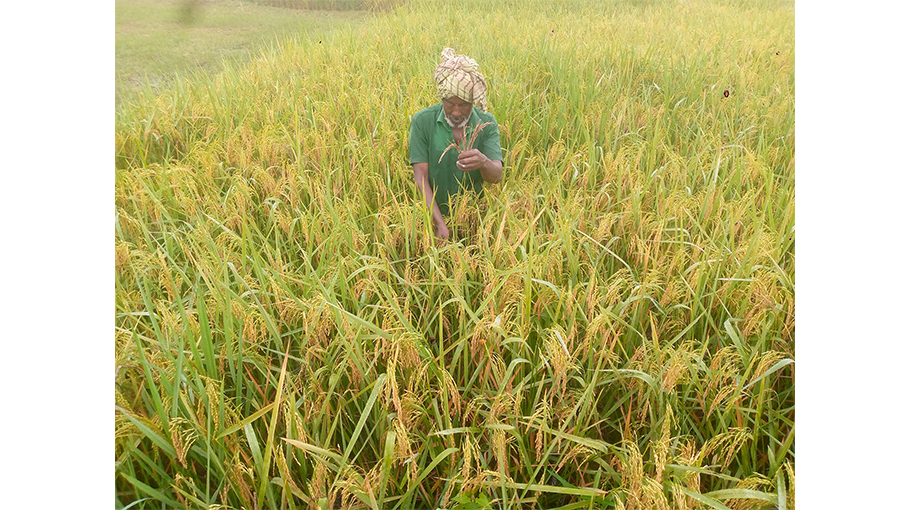Brown planthoppers damaging T-Aman paddy in Jhenaidah

Brown planthoppers, a harmful pest widely known as “Current Poka,” are damaging the standing Transplanting Aman (T-Aman) plants in different parts of Jhenaidah district.
According to the farmers, these issues are beginning to severely affect the health and productivity of their crops. However, officials from the Jhenaidah Department of Agricultural Extension (DAE) have pointed out that some farmers may not be applying pesticides effectively, either in terms of timing or in focusing on areas where paddy plants are most vulnerable.
During a visit to T-Aman paddy plots in the Sastibar and Parbatipur villages of Shailkupa and Jhenaidah Sadar, several farmers reported visible signs of damage caused by these pests and diseases. Imarat Sheikh, a farmer from Jhaudia village in Shailkupa Upazila, described the situation with the brown planthopper on his land and surrounding plots. He explained that the pest aggressively sucks essential nutrients and moisture from the plants, which weakens them over time. He observed that plants are gradually deteriorating under this relentless pest attack, threatening the season's harvest.
In addition to brown planthopper, farmers are also concerned about bacterial panicle blight, a disease that has caused paddy plants to blacken and dry up prematurely. According to farmers, bacterial panicle blight has been hampering plant growth and affecting their yield potential. They reported following the advice of local agricultural officers by applying pesticides on multiple occasions. Despite their efforts, however, the results have not been as effective as expected. Farmers explained that they’ve even come up with a local nickname for the brown planthopper pest, calling it “Current Poka” due to the rapid damage it inflicts—comparable to the suddenness and speed of electricity.
Jhenaidah Sadar Upazila Agricultural Officers, including Nur-E-Nabi and Shailkupa Upazila Agricultural Officer Arifuzzaman, acknowledged the presence of both brown planthopper and bacterial panicle blight in affected paddy plots. The officers explained that the brown planthopper usually targets the lower parts of paddy plants, where it can inflict the most damage. However, many farmers often spray insecticides on the upper portions of the plants, leaving the lower parts untreated. This approach reduces the effectiveness of the pesticide, as the pests hiding lower on the plants remain unaffected.
Both officers emphasized that certain environmental conditions are likely exacerbating these infestations. For instance, waterlogged paddy fields combined with sudden hot weather create a favorable environment for both brown planthopper infestations and the spread of diseases like bacterial panicle blight. The officers also pointed out that when a farmer sprays insecticides on their land, it can cause brown planthopper to disperse to nearby fields, where the pests can reproduce and launch further attacks on other paddy plots. This mobility allows the pest to evade control efforts and spread across larger areas, making complete eradication more challenging.
The agricultural officials advised farmers to follow a coordinated approach, urging all nearby farmers to apply pesticides simultaneously and at regular intervals. This strategy, they explained, would prevent brown planthopper from relocating to untreated fields and would halt the cycle of infestation. They further recommended that farmers pay closer attention to DAE guidelines for pest and disease management. By following these instructions, farmers can not only mitigate current issues but also ensure a healthier crop in future seasons.
Furthermore, the officials stressed the importance of collaboration among farmers to tackle infestations effectively. They recommended that farmers spray pesticides thoroughly, including on the lower parts of the plants where brown planthopper tends to gather. By ensuring that the pesticide reaches these lower areas, the pests and their larvae are more likely to be destroyed, which can help reduce the spread of both brown planthopper and bacterial panicle blight. Following these integrated pest management (IPM) practices, along with regular monitoring and cooperation with DAE representatives, can significantly reduce crop loss and lead to more disease-free yields.




